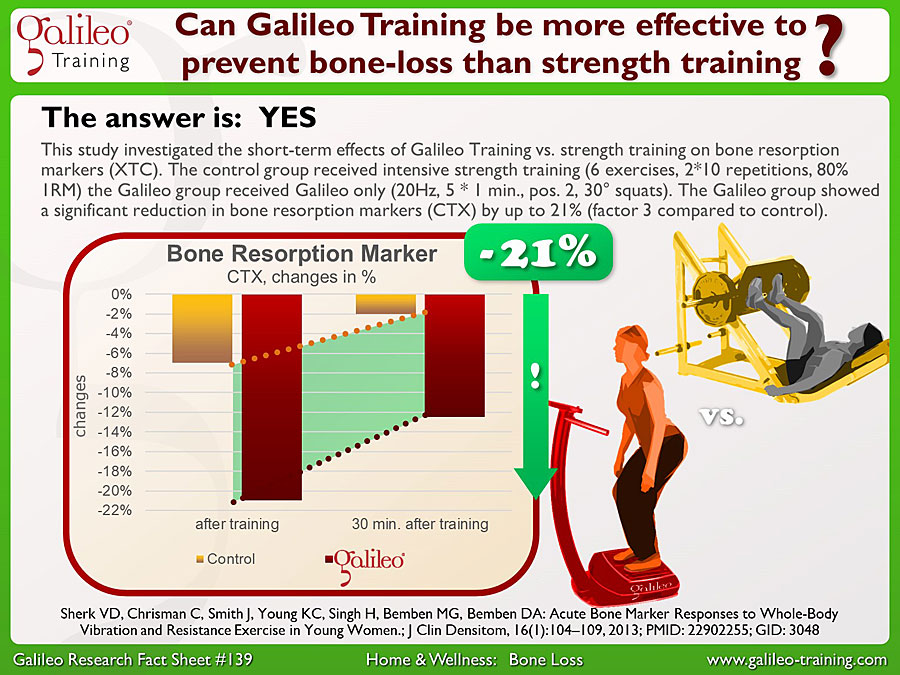Galileo Research Facts No. 139: Can Galileo Training be more effective to prevent bone-loss than strength training?


This study investigated the short-term effects of Galileo Training compared to intensive strength training on bone resorption markers (CTX). CTX, which can be measured in blood samples, is one of the most common markers used by bone research to quantify bone loss. The control group received intensive strength training consisting of 6 exercises (leg press, hip extension, hip abduction, hip adduction, low row and shoulder press). Each exercise consisted of 3 sets of 10 repetitions at 80% 1RM (one repetition maximum, total training time 30 minutes). The Galileo group one received 5 times 1 minute Galileo Training at 20Hz (position 2, 30° squat, total training time 9 minutes) (higher frequencies of 25 to 30Hz probably would have been even more effective, #GRFS3, #GRFS21, #GRFS22).
Even though training time was only one third of the strength training group and no extra weight were used Galileo Training showed significantly higher effects on bone resorption markers (CTX) than strength training immediately after the exercises (-21%) as well as 30 minutes after the training (-12%). This is equivalent to a factor 3 and more compared to the control group. Galileo training showed to be not only more effective but also more efficient than strength training. The study results are in line with other Galileo studies focusing on bone loss (#GRFS127, #GRFS79, #GRFS68).
#GRFS139 #GalileoTraining #BoneLoss #VibrationTraining #CTX #ResorptionMarker #BoneResprotion #StrengthTraining
The verdict of our customers: Excellent
4.7 out of 5 stars based on 868 reviews
Since 1996 we support our Galileo® customers worldwide.
Development and manufacturing in Germany.
10-year service guarantee &
5-year warranty for private customers in Germany.
Unlimited user support for all Galileo customers.
Effectiveness demonstrated in over 500 scientiffic publications.